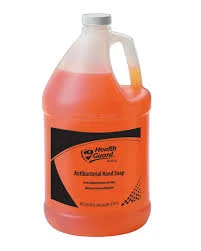Examples of Common Polycarboxylic Acids and Their Applications in Various Industries
Polycarboxylic Acids An Overview with Examples
Polycarboxylic acids are organic compounds characterized by the presence of multiple carboxyl (-COOH) functional groups. These compounds are critical in various chemical processes, biochemical pathways, and industrial applications. The basic structure of polycarboxylic acids can be derived from simple carboxylic acids, but they include additional carboxyl groups, making them unique in terms of their reactivity and properties.
One of the most common polycarboxylic acids is citric acid, which is widely found in citrus fruits. Citric acid contains three carboxyl groups, which give it the ability to act both as a weak acid and as a chelating agent. In biological systems, citric acid is a key intermediate in the citric acid cycle (Krebs cycle), which is crucial for cellular respiration. Its sour taste makes it a popular additive in food and beverages, and its chelating properties are utilized in various cleaning products to bind metal ions.
Polycarboxylic Acids An Overview with Examples
Oxalic acid, which features two carboxyl groups, is another important polycarboxylic acid. It is naturally present in many plants, including spinach and rhubarb. In its pure form, oxalic acid is a colorless, hygroscopic crystal that serves as a reducing agent in various chemical reactions. In higher concentrations, oxalic acid can be toxic and is known to form insoluble salts (oxalates) with calcium, which is a concern in human nutrition as excessive intake can lead to kidney stones. Nevertheless, oxalic acid is also applied in several industrial processes, such as bleaching, and as a cleaning agent.
polycarboxylic acid examples

Further expanding the scope of polycarboxylic acids, we encounter fumaric acid, which contains two carboxyl groups and is widely used in the food industry as an acidity regulator and flavoring agent. Fumaric acid is also an important substance in the synthesis of fumaric acid derivatives, which have applications ranging from pharmaceuticals to polymers. As a byproduct of the metabolism of certain microorganisms, fumaric acid is even used in dietary supplements for its potential health benefits.
Another fascinating polycarboxylic acid is maleic acid. With two carboxyl groups and a double bond, maleic acid is frequently utilized in the synthesis of various copolymers and as a precursor to important chemicals like surfactants and plasticizers. It is commonly used in the production of unsaturated polyester resins, which find applications in coatings and automotive parts.
Additionally, polycarboxylic acids like polyacrylic acid, a synthetic variant, serve as superabsorbent polymers in products like diapers and feminine hygiene products. Their ability to absorb and retain water makes them invaluable in personal care and agricultural applications to improve soil moisture retention.
In conclusion, polycarboxylic acids are vital compounds with diverse chemical structures and a wide range of applications. From citric and tartaric acids in nutrition and beverage industries to maleic and fumaric acids in industrial processes, these compounds contribute significantly to both biological systems and industrial chemistry. Understanding their properties and applications is essential for leveraging their potential in various fields, from agriculture and food science to pharmaceuticals and materials engineering. As research continues to uncover new uses and derivatives, polycarboxylic acids will likely maintain their significance in both organic chemistry and everyday life.
-
Pbtc Scale InhibitorPBTC: A Scale Protector for Industrial Water TreatmentNewsAug.05,2025
-
Organic Phosphonate: An Efficient Defender in the Field of Scale InhibitionNewsAug.05,2025
-
Hydrolyzed Polymaleic Anhydride: Green Pioneer in Scale Inhibition FieldNewsAug.05,2025
-
PAPEMP Polyamino Polyether Methylene Phosphonic Acid For SaleNewsAug.05,2025
-
Flocculant Water Treatment: A Pioneer in Purification in the Field of Water TreatmentNewsAug.05,2025
-
Benzyl Isothiazolinone: An Efficient and Broad-Spectrum Antibacterial Protective GuardNewsAug.05,2025





